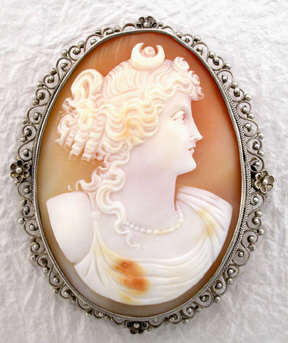Repairing a Sterling Silver Shell Cameo Pin
Repairs and alterations of jewelry that has been in families for generations is an ongoing request at retail service departments. These pieces are not of high value, but they have sentimental value to the owner. Often these pieces were not made properly, excessively worn or broken. To keep your customers happy, repairs to these pieces are inevitable and this article covers procedures for simplifying the process, minimizing risk and maximizing profit margins for the service department.
2 Minute Read
Repairs and alterations of jewelry that has been in families for generations is an ongoing request at retail service departments. These pieces are not of high value, but they have sentimental value to the owner. Often these pieces were not made properly, excessively worn or broken.
To keep your customers happy, repairs to these pieces are inevitable and this article covers procedures for simplifying the process, minimizing risk and maximizing profit margins for the service department.
This sterling silver shell cameo pin had a hook at the top on the back side. It was used to make wearing the pin possible as a pendant with a chain or a strand of pearls.
Important
All tack-, fusion- and pulse-arc equipment settings will differ and are based upon the volume, amount of contact and alloy of the material you are assembling. Working with like materials will give you a parameter for the settings required for your application. Keep a record of settings and tasks for future reference.
You assume all responsibility and risk for the use of the safety resources available on or through this web page. The International Gem Society LLC does not assume any liability for the materials, information and opinions provided on, or available through, this web page. No advice or information provided by this website shall create any warranty. Reliance on such advice, information or the content of this web page is solely at your own risk, including without limitation any safety guidelines, resources or precautions, or any other information related to safety that may be available on or through this web page. The International Gem Society LLC disclaims any liability for injury, death or damages resulting from the use thereof.
The All-In-One Jewelry Making Solution At Your Fingertips
When you join the Ganoksin community, you get the tools you need to take your work to the next level.
Trusted Jewelry Making Information & Techniques
Sign up to receive the latest articles, techniques, and inspirations with our free newsletter.
